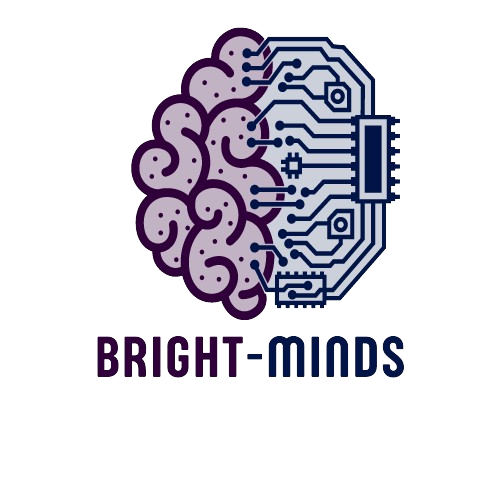In a world increasingly dominated by screens and keyboards, you might wonder: Is handwriting still relevant? Surprisingly, science—and experience—says yes. If you’re looking to sharpen your memory, improve your focus, and boost your long-term learning retention, picking up a pen might be your smartest move.
Whether you’re a student, professional, or lifelong learner, understanding the impact of handwriting can unlock a new level of productivity and cognitive performance. Let’s explore how—and why—you should start writing by hand more often.
Why Handwriting Still Matters in a Digital Age
Despite the rise of laptops, tablets, and AI tools, handwriting remains a powerful tool for learning. It engages the brain differently than typing, activating areas linked to memory, comprehension, and creativity.
A 2021 study from the University of Tokyo found that students who took notes by hand retained information significantly better than those who typed. Why? Handwriting requires more mental effort. You summarize, rephrase, and process as you write—cementing the knowledge more deeply.
Think of it like this: typing is like copying and pasting; handwriting is like sculpting. It takes longer—but the result is more meaningful.
How Handwriting Boosts Memory and Learning Retention
Here’s how handwriting helps you absorb and retain information:
🧠 1. Activates Multiple Brain Regions
When you write by hand, you engage:
- Motor skills (movement)
- Visual processing (seeing letters form)
- Cognitive functions (thinking about meaning)
This multisensory experience makes your brain work harder—and smarter.
📒 2. Encourages Better Note-Taking
Typing often leads to verbatim note-taking, which means you’re just transcribing, not processing. In contrast, handwriting forces you to summarize and organize information as you write, enhancing understanding.
🧩 3. Improves Focus and Attention
Digital devices come with distractions: notifications, emails, social media. Handwriting provides a distraction-free environment, helping you stay present and focused.
🗂️ 4. Aids in Long-Term Retention
According to cognitive psychologist Dr. Pam Mueller, students who handwrite notes perform better on conceptual tests than their typing counterparts. Why? Writing helps encode information into long-term memory more effectively.
Market Trends: A Return to Analog in a Digital World
Surprisingly, in our high-tech age, handwriting tools are making a comeback:
- The global stationery market is expected to reach $29.24 billion by 2027, driven in part by the demand for journals, notebooks, and writing tools.
- Digital note-taking apps that simulate handwriting—like GoodNotes and Notability—are booming, indicating a shift toward hybrid learning.
- Schools and companies are reintroducing handwriting programs to improve cognitive development and productivity.
Clearly, the handwriting revolution isn’t over—it’s just getting smarter.
Real-World Applications: Who Benefits Most?
🎓 Students
From grade school to grad school, handwritten notes help students understand complex ideas, retain facts, and ace exams. Try color-coding notes or using mind maps to enhance memory even more.
💼 Professionals
In meetings, brainstorming sessions, or daily planning, handwriting encourages deeper engagement and creativity. Ever notice how your best ideas come during doodling or scribbling? That’s no accident.
🧘♂️ Personal Growth Seekers
Journaling by hand is a powerful practice for self-reflection, goal setting, and stress reduction. Writing out your goals connects you emotionally—making you more likely to follow through.
How to Reintroduce Handwriting into Your Daily Life
You don’t need to ditch technology entirely. A blended approach often works best. Here are some easy ways to incorporate handwriting:
✍️ 1. Start a Daily Journal
Even 5–10 minutes of handwriting in the morning or evening can sharpen your mind and improve focus. Reflect on your day or write down your goals.
📅 2. Use a Paper Planner
Replace (or supplement) your digital calendar with a paper planner. Writing tasks down by hand improves recall and commitment.
📝 3. Handwrite Your Notes
In class, in meetings, or during webinars—opt for pen and paper. Later, you can digitize key points for storage or sharing.
📚 4. Try Sketch Notes or Mind Mapping
Visual learners benefit from diagrams, arrows, and illustrations—something that’s much easier to do by hand.
Relatable Examples: From the Classroom to the Boardroom
✅ Sarah, a college student:
After switching to handwritten notes, she found studying easier and scored one full grade higher on her exams. “It felt like I was teaching myself as I wrote,” she says.
✅ David, a marketing executive:
He uses a paper notebook for brainstorming ideas. “Typing felt sterile,” he admits. “But when I write things down, I see connections I didn’t notice before.”
✅ Lina, a wellness coach:
She encourages clients to journal daily. “It’s not just about memory—it’s emotional clarity too,” she shares.
Industry Insights: What Educators and Employers Are Saying
Educators across the globe are advocating for handwriting curricula, even in tech-heavy classrooms. In Norway, handwriting is now taught alongside keyboard skills to ensure cognitive development isn’t compromised.
Corporate training experts are also encouraging handwritten reflections during workshops to boost engagement and retention.
Conclusion? Handwriting isn’t just nostalgic—it’s neurologically beneficial.
Handwriting and Financial Literacy: A Powerful Combo
If you’re working toward financial literacy, handwriting can help you:
- Track spending habits manually to raise awareness
- Write out savings goals and see them stick
- Create visual budget charts that imprint better than spreadsheets
Just like learning any skill—whether it’s budgeting or investing—writing things down by hand helps internalize knowledge and reinforce good habits.
Take the First Step Toward Smarter Learning and Better Memory
So here’s your challenge:
✍️ Grab a pen. Write your goals. Reflect. Take notes. Plan your future—by hand.
And if you’re ready to dive deeper into learning, growth, and memory-boosting strategies, explore our expert-designed courses and resources. Whether you’re learning to manage your money, master your mindset, or climb the corporate ladder, we’ve got you covered.
✅ Explore Our Learning Hub:
Visit [Our Website] to unlock advanced tools and expert-led courses that guide you toward financial success, personal growth, and professional development.
You may also like this:-

